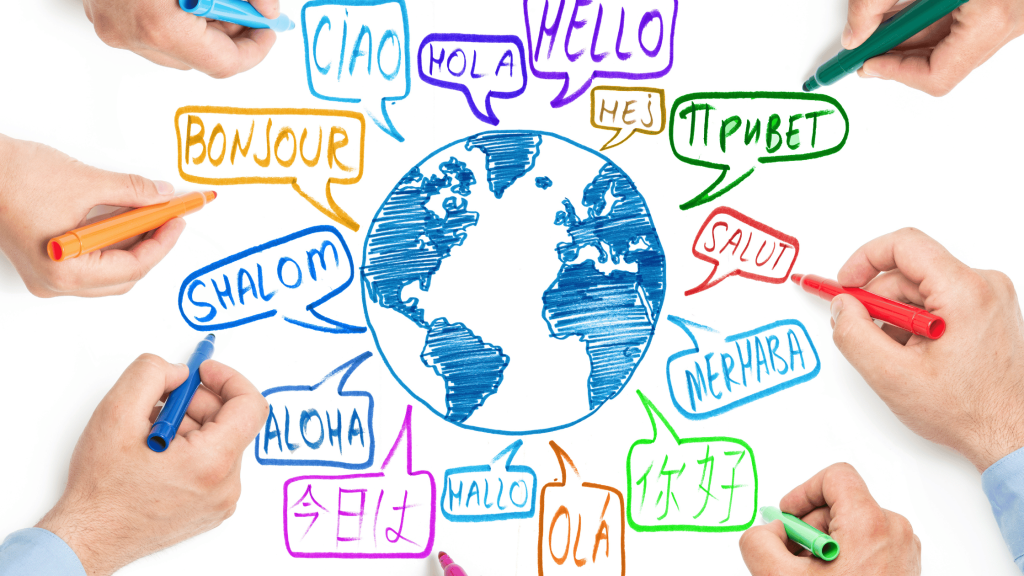|
Listen to Post
|
Listen to this article now:
In an increasingly interconnected world, knowing how to say “hello” in multiple languages can be a valuable skill. More specifically, greeting people in their native language can greatly help in building meaningful connections, whether you’re traveling, working with international clients, or simply aiming to broaden your linguistic horizons. In this article, we’ll explore how to say hello in 20 languages, providing you with a global greeting guide.
- Spanish – Hola
“Hola” stands as one of the most universally recognized greetings, offering a perfect starting point for your language exploration.
- French – Bonjour
The French are known for their romantic language, and “Bonjour” is a polite and cheerful way to say hello.
- German – Hallo
“Hallo” is a straightforward and friendly greeting in the German language.

- Chinese – 你好 (Nǐ hǎo)
Chinese claims the title of the world’s most spoken language, with an impressive count of over a billion speakers. So, it is useful to learn the greeting “Nǐ hǎo” which serves as both the formal and informal way to say hello.
- Japanese – こんにちは (Konnichiwa)
When in Japan, say “Konnichiwa” to start a conversation politely and formally.
- Korean – 안녕하세요 (Annyeonghaseyo)
The greeting “Annyeonghaseyo” embodies the essence of politeness and respect.
- Arabic – مرحباً (Marhaba)
The Arabic-speaking world welcomes you with “Marhaba”, a warm and inviting greeting.
- Russian – Здравствуй (Zdravstvuy), Привет (Privet)
In the vast expanse of Russia, greetings take on different forms depending on the occasion. For formal situations, “Zdravstvuy” is the choice, while among friends, “Privet” offers a warm and informal embrace when saying hello.
- Italian – Ciao
If you have a passion for art, cuisine, and history then “Ciao” will be useful for your next trip.
- Portuguese – Olá
Both in Portugal and Brazil, “Olá” serves as the universal and customary greeting.

- Dutch – Hallo:
Looking beyond the surface, Dutch might appear complex, but its greetings are refreshingly simple. “Hallo” is suitable for all situations.
- Swedish – Hej
To greet, Swedes keep it uncomplicated with the casual “Hej”.
- Greek – Γεια (Ya)
In the vibrant realm of Greece, “Ya” gracefully emerges as a simple and refined way to say hello.
- Turkish – Merhaba
“Merhaba” reflects the idea of welcome and hospitality, whereas its origins are rooted in the Arabic language.
- Polish – Cześć
In Poland, “Cześć” is the informal way of greeting. In addition, it can be used to say goodbye. This flexibility makes it a handy and multifunctional word in everyday Polish communication.
- Hindi – नमस्ते (Namaste)
In India, people often greet with “Namaste” by bringing their hands together in a prayer-like position at their chest and offering a slight bow. This gesture reflects the deep spiritual and philosophical traditions of India and emphasizes the unity of all living beings.
- Thai – สวัสดี (Sawasdee)
In Thailand, “Sawasdee”” is the traditional greeting. Interestingly, in Thai customs, there are gender-specific polite particles. Men typically add the particle “khrap” after the “Sawasdee”, while women add the particle “kha” as a sign of politeness.

- Swahili – (Shikamoo, Habari)
This vibrant language offers a rich palette of salutations to suit different occasions. To show respect for your elders, “Shikamoo” is the appropriate word, while the word “Habari” mostly embodies the warm and familiar face of Swahili greeting.
- Persian – سلام (Salām)
“Salām” not only means “hello”, but also carries the deeper meaning of “peace”. So, it is a heartfelt and symbolic way to greet someone in Persian-speaking regions.
- Ukrainian – Привіт (Pryvit)
At the heart of the Ukrainian linguistic variety for the word “hello”, you’ll find “pryvit”, which is the most popular equivalent. It’s the go-to greeting for casual encounters, like those cherished moments with friends and family.
In a world filled with diverse cultures and languages, knowing how to say hello in 20 languages is a powerful tool. Whether you’re a globetrotter, a business professional, or simply someone who values cross-cultural connections, learning these 20 greetings can open doors and create lasting impressions. So, why not start practicing and add a touch of global charm to your next interaction?
Read also:








